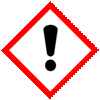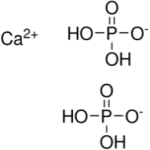CAS Number 7758-23-8, 10031-30-8, Monocalcium Phosphate or Calcium Phosphate Monobasic or Calcium Dihydrogen Phosphate Monohydrate and Anhydrous FCC Food Grade Manufacturers Exporters







CAS Number Anhydrous 7758-23-8, Monohydrate 10031-30-8, Monocalcium Phosphate or Calcium Phosphate Monobasic or Calcium Dihydrogen Phosphate Monohydrate and Anhydrous Manufacturer Exporter
For Properties Specifications of Monocalcium Phosphate or Calcium Phosphate Monobasic Monohydrate or Calcium Dihydrogen Phosphate and Anhydrous Click Properties, Specifications of Monocalcium Phosphate or Calcium Phosphate Monobasic or Calcium Dihydrogen Phosphate Monohydrate and Anhydrous Manufacturer.
For Uses of Monocalcium Phosphate or Calcium Phosphate Monobasic or Calcium Dihydrogen Phosphate Click Uses of Monocalcium Phosphate or Calcium Phosphate Monobasic or Calcium Dihydrogen Phosphate Manufacturer.
For For SDS MSDS Sheet of Monocalcium Phosphate or Calcium Phosphate Monobasic or Calcium Dihydrogen Phosphate Click SDS Safety Data Sheet MSDS Sheet of Monocalcium Phosphate or Calcium Phosphate Monobasic or Calcium Dihydrogen Phosphate Manufacturer.
The Properties and Specifications of Monocalcium Phosphate or Calcium Phosphate Monobasic Monohydrate and Anhydrous:
Monobasic Calcium Phosphate FCC Food Grade Specifications
Monocalcium Phosphate; Calcium Biphosphate; Acid Calcium Phosphate
Ca(H2PO4)2 Formula weight, anhydrous 234.05
Ca(H2PO4)2-H2O Formula weight, monohydrate 252.07
CAS: anhydrous 7758-23-8
INS: 341(i) CAS: monohydrate 10031-30-8
DESCRIPTION
Calcium Phosphate, Monobasic, occurs as white crystals or granules or as a granular powder. It is anhydrous or contains one molecule of water of hydration, but because of its deliquescent nature, more than the calculated amount of water may be present. It is sparingly soluble in water and is insoluble in alcohol.
Function: Buffer; dough conditioner; firming agent; leavening agent; nutrient; yeast food; sequestrant.
REQUIREMENTS
Labeling: Indicate the state of hydration.
Identification:
A. Dissolve 100 mg of sample by warming it in a mixture of 2 mL of 2.7 N hydrochloric acid and 8 mL of water. Add 5 mL of ammonium oxalate TS. A white precipitate forms.
B. Add ammonium molybdate TS to a warm solution of sample in a slight excess of nitric acid. A yellow precipitate of ammonium phosphomolybdate forms.
Assay: Anhydrous: Not less than 16.8% and not more than 18.3% of Ca; Monohydrate: Not less than 15.9% and not more than 17.7% of Ca.
Arsenic: Not more than 3 mg/kg.
Fluoride: Not more than 0.005%.
Lead: Not more than 2 mg/kg.
Loss on Drying: Monohydrate: Not more than 1%.
Loss on Ignition Anhydrous: Between 14.0% and 15.5%.
The Uses of Monocalcium Phosphate or Calcium Phosphate Monobasic:
Monobasic calcium phosphate is primarily used in fertilizers. It also is used in baking powders; as a mineral supplement in food; as a buffer for pH control; and as a stabilizer for plastics. Calcium Phosphate, Monobasic, Monohydrate, Powder, FCC is used in the food industry as a leavening agent. Monobasic calcium phosphate used as a sequestrant in food for human consumption is generally recognized as safe when used in accordance with good manufacturing practice.
The MSDS-SDS Hazard Statement of Monocalcium Phosphate or Calcium Phosphate Monobasic:
Calcium Phosphate Monobasic SDS Safety Data Sheet
MSDS Sheet, Material Safety Data Sheet of Monocalcium Phosphate 09-Jan-23
1. Product Identification
Product Name & Other Names: Calcium Phosphate Monobasic or Monocalcium Phosphate or Calcium Dihydrogen Phosphate or Phosphoric acid, calcium salt (2:1) monohydrate or acid calcium phosphate or monocalcium orthophosphate or calcium super phosphate.
CAS No.: 7758-23-8 (10031-30-8 is also quoted)
EINECS EC Number: 231-837-1
Molecular Weight: 252
Chemical Formula: Ca(H2PO4)2 H2O
Relevant uses and uses advised against (if any):: Laboratory Chemicals and Industrial Manufacturing Use.
2. Hazards Identification
GHS, Globally Harmonized System Classification in accordance with 29 CFR 1910
Classification according to Regulation (EC) No 1272/2008
Skin corrosion/irritation Category 2, H315
Serious eye damage/eye irritation Category 2B, H320
Specific target organ toxicity, single exposure; Respiratory tract irritation Category 3, H335
Labeling according to Regulation (EC) No 1272/2008 [CLP]
GHS Label Elements  Irritant |
Signal Words: Warning
Hazard statements:
H315: Causes skin irritation.
H320: Causes eye irritation.
H335: May cause respiratory irritation.
Precautionary statements:
P262: Do not get in eyes, on skin, or on clothing.
P264: Wash skin thoroughly after handling.
P280: Wear protective gloves/protective clothing/eye protection/face protection.
P302+352: IF ON SKIN: Wash with soap and water.
P304+P340: IF INHALED: Remove victim to fresh air and keep at rest in a position comfortable for breathing.
P305+351+338: IF IN EYES: Rinse cautiously with water for several minutes. Remove contact lenses if present and easy to do – continue rinsing.
P332+313: If skin irritation occurs: Get medical advice/attention.
P337+P313: If eye irritation persists: Get medical advice/ attention.
3. Composition/Information on Ingredients
Product Name & Other Names: Calcium Phosphate Monobasic or Monocalcium Phosphate or Calcium Dihydrogen Phosphate or Phosphoric acid, calcium salt (2:1) monohydrate or acid calcium phosphate or monocalcium orthophosphate or calcium super phosphate.
CAS No.: 7758-23-8 (10031-30-8 is also quoted)
EINECS EC Number: 231-837-1
4. First Aid Measures
Always seek medical advice after the first aid treatment.
Inhalation: Allow the victim to rest in a well-ventilated area. Seek immediate medical attention.
Ingestion: Give several glasses of water to drink to dilute. If large amounts were swallowed, get medical advice.
Skin Contact: After contact with skin, wash immediately with plenty of water. Gently and thoroughly wash the contaminated skin with running water and non-abrasive soap. Be particularly careful to clean. folds, crevices, creases, and groin. Cold water may be used. Cover the irritated skin with an emollient. If irritation persists, seek medical attention.
Eye Contact: Immediately flush eyes with plenty of water for at least 15 minutes, lifting lower and upper eyelids occasionally. Get medical attention immediately.
5. Fire Fighting Measures
Fire: Not considered to be a fire hazard.
Explosion: Not considered to be an explosion hazard.
Fire Extinguishing Media: Use any means suitable for extinguishing surrounding fire.
Special Information: In the event of a fire, wear full protective clothing and NIOSH-approved self-contained breathing apparatus with full face piece operated in the pressure demand or other positive pressure mode. At high temperatures under fire conditions, it may produce toxic or irritating fumes. Fire-extinguishing work is done from the windward and the suitable fire-extinguishing method according to the surrounding situation is used.
6. Accidental Release Measures
Personal precautions, protective equipment, and emergency procedures: Avoid breathing dust/fumes/gas/mist/vapors/spray. Use individual protective equipment (waterproof boots, suitable protective clothing, safety glasses, etc.). Restrict unprotected personnel from the area. Prevent any contact with hot surfaces. Do not approach facing the wind. Do not touch the spilled material.
Environmental precautions: Do not let the product enter drains, soil, or water sources.
Methods and materials used for containment Cleanup procedures and Storage: Contain spilled material. Do not let the product enter drains. Use a shovel to put the material into a convenient waste disposal container. Finish cleaning by spreading water on the contaminated surface and allow evacuating as per law. Residue can be neutralized the with a dilute solution of sodium carbonate.
7. Handling and Storage
Precautions for safe handling: Apply according to good manufacturing and industrial hygiene practices. Ensure proper ventilation. In case of insufficient ventilation, wear suitable respiratory equipment. Wash thoroughly after handling. Do not drink, eat, or smoke while handling. Avoid contact with skin, eyes, and clothing. Minimize dust generation. Avoid breathing dust/fumes/gas/mist/vapors/spray. Keep container tightly closed. Avoid ingestion and inhalation. Use individual protective equipment (waterproof boots, suitable protective clothing, safety glasses, etc.).
Conditions for safe storage, including any incompatibilities: Store in cool, dry, and ventilated area away from heat sources and protected from sunlight in tightly closed original container. Keep air contact to a minimum. Store protected from heat, sparks and ignition sources and incompatible materials. Avoid contact with skin and eyes. Avoid inhalation of dust/mist/vapor. Do not store with incompatible materials like strong oxidizing agents.
8. Exposure Controls/Personal Protection
Airborne Exposure Limits: None established.
Ventilation System: A system of local and/or general exhaust is recommended to keep employee exposures as low as possible.
Personal Respirators (NIOSH Approved): For conditions of use where exposure to the dust or mist is apparent, a half-face dust/mist respirator may be worn.
Skin Protection: Wear protective gloves and clean body-covering clothing.
Eye Protection: Use chemical safety goggles. Maintain eye wash fountain and quick-drench facilities in work area.
Other Control Measures: Maintain good housekeeping in work area. Handle in accordance with good industrial hygiene and safety practice.
9. Physical and Chemical Properties
Appearance: White, crystalline powder.
Odor: Odorless.
Odor threshold: Not available.
pH: Not available.
Relative density: around 2.2
Boiling Point: 203C (397F)
Melting Point: 100C (212F)
Flash point: Not available.
Auto-ignition temperature: Not available.
Decomposition temperature: Not available.
Upper/lower flammability or explosive limits: Not available.
Vapor pressure: Not available.
Vapor density: Not available.
Evaporation rate: Not available.
Flammability (solid, gas): Not available.
Partition coefficient: n-octanol/water: Not available.
Solubility: 2 g in 100 g of water
Viscosity: Not available.
10. Stability and Reactivity
Stability: Stable under ordinary conditions of use and storage.
Hazardous Polymerization: Will not occur.
Incompatibilities: Strong oxidizing agents.
Conditions to Avoid: No information found.
11. Toxicological Information
Oral rat LD50 = 17,500 mg/Kg.
Carcinogenicity: No component of this product present at levels greater than or equal to 0.1% is identified as possible or confirmed human carcinogen by IARC, ACGIH, OSHA and NTP.
Mutagenic Effects: Not available.
Developmental Toxicity: Not available.
Reproductive Effects: No information available.
12. Ecological Information
Toxicity to fish: No information available.
Persistence and Degradability: No information available.
Mobility: No information available.
Bioaccumulation/ Accumulation: No information available.
Results of PBT and vPvB assessment: No data available for assessment.
13. Disposal Considerations
Whatever cannot be saved for recovery or recycling should be managed in an appropriate and approved waste disposal facility.
14. Transport Information
DOT USA, TDG Canada & ADR/RID Europe: Not controlled.
IMDG/IMO: Not controlled.
IATA/ICAO: Not controlled.
15. Regulatory Information
USA:
SARA 311/312: Acute health hazard. See section 2.
Section 16 - Additional Information
DISCLAIMER: The information and recommendations set forth herein are presented in good faith and believed correct as of the date hereof. It is compiled from various sources and it is not necessarily all inclusive nor fully adequate in every circumstance. In addition, these suggestions should not be confused with nor followed in violation of applicable laws, regulations, rules or insurance requirements applicable. This MSDS sheet is intended only as a guide to the appropriate precautionary handling of the material by a properly trained person using this product. Individuals receiving the information must exercise their independent judgment in determining its appropriateness for a particular purpose.
Anmol Chemicals & Pharmaceuticals Pvt. Ltd. is an off-shoot of Anmol Chemicals Taloja. It is located in MIDC Taloja and it is manufacturing pharmaceutical grades of API, Excepients, Food grade and Reagent grade chemicals. Anmol Chemicals & Pharmaceuticals Pvt. Ltd. is a several decades old group of companies, engaged in manufacturing, supplying, distributing, wholesale supplies for actual users, retail or small pack supplies for research and development chemicals, fine and speciality chemicals, pharmaceutical excipients, mineral fortifiers in chemically pure, Analytical reagent grade, IP BP USP Ph Eur EP JP and other pharmaceutical grade monograph including FCC Food grade chemicals and Nutraceuticals, Mineral Fortifiers at best prices.

Monocalcium Phosphate or Calcium Phosphate Monobasic Structure
CAS Number 7758-23-8, 10031-30-8, Monocalcium Phosphate or Calcium Phosphate Monobasic Monohydrate and Anhydrous Manufacturer Exporter
ANMOL CHEMICALS & PHARMACEUTICALS Pvt. Ltd.
India, USA, Europe, UAE
TELEPHONE: +912223770100
Navi Mumbai, INDIA
e-mail: info(At the rate i.e. @)anmol.org
Copyright. 22-nov-24
We manufacture:
Glacial Acetic Acid Manufacturer
Calcium Gluceptate or Calcium Glucoheptonate
Calcium Magnesium Lactate Gluconate

